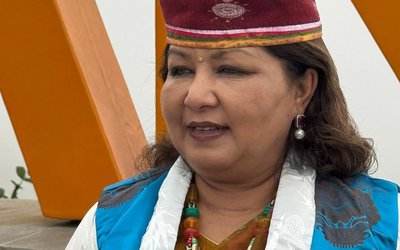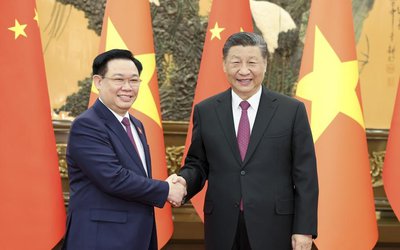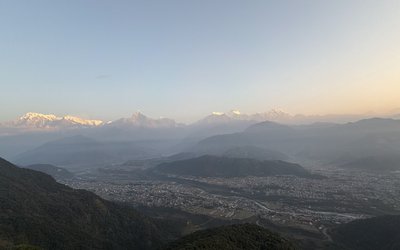
The World Bank has expressed a strong commitment to proceed with the construction of the 1,061 MW Upper Arun semi-reservoir hydropower project, set to be built in Bhotkhola Rural Municipality of Sankhuwasabha.
In a high-level gathering that included Minister of Finance, Dr. Prakasharan Mahat, Minister of Energy, Water Resources, and Irrigation, Shakti Bahadur Basnet, Federal Member of Sankhuwa Sabha, Deepak Karki, Secretary of Energy, Dinesh Kumar Ghimire, Managing Director of Nepal Electricity Authority, Kulman Ghising, and Managing Director of the World Bank, Ana Wierde, who leads the co-financing of international organizations for investment in the project, progress was discussed.
A team, including Ramesh Subramaniam, Director General of the Asian Development Bank (ADB), visited the project site on Friday.
Finance Minister Mahat emphasized that the Upper Arun Hydroelectric Project is on the verge of entering the implementation phase. Despite limited resources, he assured that a substantial budget has been allocated to advance the project, vowing not to allow resource constraints to hinder its progress.
Mahat also promised that local residents will have ample opportunities to invest in the project, recognizing its significance for the country. He highlighted the World Bank's keen interest in investing in the project and its efforts to secure investment from various international financial institutions.
Energy, Water Resources, and Irrigation Minister Basnet stressed that the time is ripe to harness water resources for the nation's prosperity, expressing the government's readiness and commitment to move forward with projects like Upper Arun. He acknowledged the issue of tree cutting for access road construction and pledged to address it in accordance with court orders, while ensuring that locals become stakeholders in the project.
MP Khadka, noting the local community's eagerness to support the project, urged for an expedited start to the construction.
World Bank Managing Director Wierde shared that the Upper Arun project has been a recurring topic since his arrival in Nepal, emphasizing the significance of the electricity it will generate for domestic consumption and export. He expressed the bank's readiness to invest in the project, acknowledging the enthusiasm from all stakeholders, including the local community.
The Upper Arun project, with an estimated cost of $1.75 billion, including interest and price adjustments during the construction period, will be funded with 70% debt and 30% equity. The project, led by the authority, is set to serve as a model of 'blended financing,' incorporating a mix of investment sources.
The project's financing will involve the Nepal government, state government, local authorities in the project-affected districts, residents from the project-affected districts, citizens from across the country, concessional loans from international multilateral development partners, and loans from local banks and financial institutions.
In the co-financing led by the World Bank, international financial institutions will contribute concessional loans totaling $750 million, with the World Bank providing a subsidized loan of $500 million.
A financial plan has been devised to raise $400 million from local banks and financial institutions. Under the leadership of the Hydroelectricity Investment and Development Company (HIDCL), a memorandum of understanding (MOU) has been signed to facilitate investment through co-financing with local banks and financial institutions.
Of the approximately NPR 64 billion in equity, 51 percent will be collected from the founder shares of the Upper Arun Hydro Electric Company, the project's promoter, and 49 percent from public shares.
As part of the People's Hydropower Program, the Upper Arun project will include founding shares from the provincial government, the local authority in Sankhuwasabha district where the project is located, and the Nepal Electricity Authority. Project-affected residents and citizens from across the country will have 49 percent common shares, with approximately NPR 32 billion to be raised by issuing public shares.
The financial management of the project is expected to be in place by June 2024, with construction targeted to commence in mid-2025. The project's completion is projected for 2031.
The feasibility study has been concluded, and a consultant has been selected for tender design and construction supervision. Among the initial preparations for the project, construction has commenced on approximately 21 kilometers of access roads, including 2 kilometers of tunnels.
Compensation for the acquisition of the 2.25 hectares of private land required for the project has been determined, with approximately 22 households facing physical displacement. The study indicates that the environmental and social impacts from the project's construction will be relatively low.
The project is designed to operate at full capacity for 6 hours a day during the 6 high-demand winter months, producing an annual energy output of 4.51 billion units.
Approximately 30 percent of this energy will be generated during winter, and the electricity will be transmitted to the national system via a proposed substation at Haytar in Sankhuwasabha through a 6 km 400 KV transmission line.
The Authority is also advancing the 30 MW Ikhuwa hydropower project, which is set to be integrated into the Upper Arun project. Ikhuwa is another initiative included in the Janata Hydropower Program.
- Continuous Earthquake Tremors In Jajarkot
- Apr 15, 2025
- Foreign Minister Dr. Deuba Praises Valuable Initiative Of Organizing Retreat For Kathmandu-based Diplomats
- Apr 15, 2025
- We will increase investment in tourism and hydropower: FNCCI President Dhakal
- Apr 15, 2025
- Xi calls on China, Vietnam to oppose 'bullying' amid trade friction with US
- Apr 15, 2025
- Weather Forecast: Brief Rain With Thunder Storms In Kathmandu And Pokhara
- Apr 15, 2025














